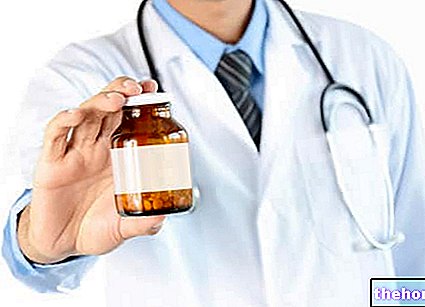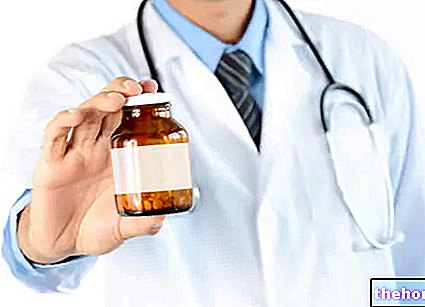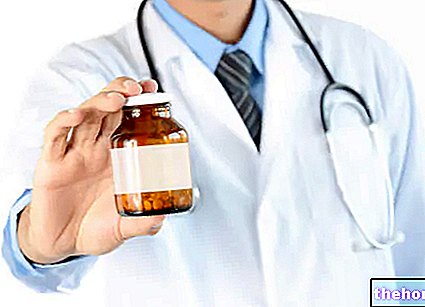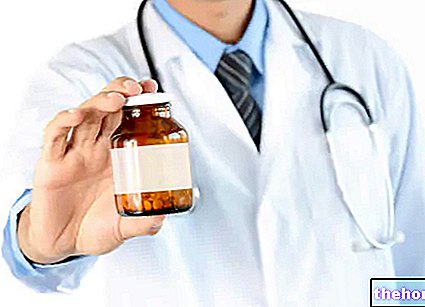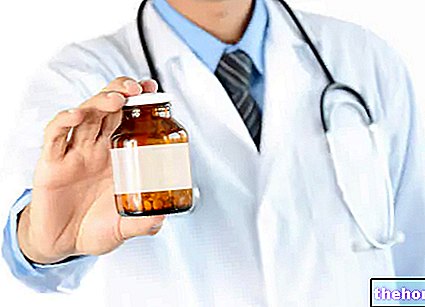Active ingredients: Cefpodoxime
CEFODOX 100 mg film-coated tablets
CEFODOX 200 mg film-coated tablets
Indications Why is Cefodox used? What is it for?
CEFODOX contains a substance cefpodoxime which belongs to a class of antibiotics called "cephalosporins". CEFODOX is used to kill bacteria that cause infection in the body.
Your doctor has prescribed CEFODOX for you if you have:
- Tonsillitis (inflammation of the tonsils in the throat)
- Acute bacterial sinusitis (severe inflammation of the nose caused by germs)
- Acute aggravation of chronic bronchitis (chronic lung disease)
- Bacterial pneumonia (infection of the lungs caused by germs).
Contraindications When Cefodox should not be used
DO NOT use CEFODOX
- if you are allergic to cefpodoxime, other cephalosporins, or any of the other ingredients of this medicine (listed in section 6)
- if you have had a severe allergic reaction to particular antibiotics (penicillins, monobactams, and carbapenems) as you may also be allergic to cefpodoxime.
If you think any of these apply to you, talk to your doctor before using this medicine. In these cases, your doctor will not prescribe Cefpodoxime for you.
Precautions for use What you need to know before taking Cefodox
Talk to your doctor or pharmacist before using CEFODOX.
In particular, tell your doctor if:
- have kidneys that are not working very well and / or are undergoing some type of treatment (such as dialysis) for kidney failure. In this case, your doctor will prescribe a lower dose of cefpodoxime
- have ever had an "intestinal inflammation called colitis or other serious diseases affecting the digestive system (stomach) and / or intestines. You must undergo certain medical blood tests such as cross-matching and the Coombs test (tests are usually given before a blood transfusion), as this medicine can alter the results
- diabetes and you should check your urine frequently, as this medicine can alter the results of urinalysis to determine sugar levels (such as Benedict's or Fehling's tests). Your doctor will recommend that you use other tests to check for diabetes while you are taking this medicine.
Children and adolescents
CEFODOX film-coated tablets are not indicated for children below 12 years of age.
Interactions Which drugs or foods can modify the effect of Cefodox
Tell your doctor or pharmacist if you are taking, have recently taken or might take any other medicines.
The way this medicine works can be affected by other medicines that are eliminated by the kidney. This is especially the case when given together with medicines that affect the proper functioning of the kidneys. Many medicines can influence the effect of cefpodoxime, so consult your doctor before using this CEFODOX.
In particular, tell your doctor or pharmacist if the person taking this medicine is taking:
- Antacids (used to treat indigestion)
- Anti-ulcer drugs (used to treat ulcers), such as ranitidine and cimetidine
- Diuretics (used to increase urine flow)
- Aminoglycoside antibiotics used in the treatment of infections
- Probenecid (used in the treatment of gout)
- Anticoagulants such as warfarin.
Antacids and antiulcers (such as ranitidine and cimetidine) should be taken 2-3 hours after taking CEFODOX. Your doctor is familiar with these medicines and will change your treatment if he deems it appropriate.
Medical exams
Tell your doctor if anyone who is taking this medicine has to undergo medical tests (blood, urine or diagnostic tests) while taking this medicine, as this medicine can affect the test results (see section "Warnings and precautions"). .
CEFODOX with food and drink
Always use this medicine with meals (see section 3 "How to use CEFODOX").
Warnings It is important to know that:
Pregnancy and breastfeeding
If you are pregnant or breast-feeding, think you may be pregnant or are planning to have a baby, ask your doctor or pharmacist for advice before using this medicine. Your doctor will evaluate the benefit of treatment with CEFODOX against the risk to the baby. If you are breastfeeding this medicine can be used. If the infant develops symptoms such as diarrhea or mucosal infections, inform the doctor.
Driving and using machines
Avoid using vehicles (including bicycles) during treatment with CEFODOX. As dizziness may occur during treatment with cefpodoxime, which may impair the ability to drive (including cycling) or use machines.
CEFODOX contains lactose (a milk sugar)
If you have been told by your doctor that you have an intolerance to some sugars, contact your doctor before using this medicine.
Dose, Method and Time of Administration How to use Cefodox: Posology
Always take this medicine exactly as your doctor or pharmacist has told you. If in doubt, consult your doctor or pharmacist.
Adults, adolescents and the elderly (without kidney problems)
The usual recommended dose is:
- in case of tonsillitis: 100 mg (1 tablet of 100 mg) twice a day
- in case of sinusitis: 200 mg (1 tablet of 200 mg or 2 tablets of 100 mg) twice a day
- in case of acute aggravation of chronic bronchitis and pneumonia: 200 mg (1 tablet of 200 mg or 2 tablets of 100 mg) twice a day A cefpodoxime-based preparation specifically for infants and children is available on the market.
Adults, adolescents and the elderly with kidney problems
Depending on the severity of your kidney problems, you may need to take cefpodoxime less often, for example once a day or every other day. Your doctor will decide on the dose you need.
If you are on dialysis then you may need to take a dose of this medicine after each dialysis session. Your doctor will tell you the dose to take each time.
How to take CEFODOX
It is important to take CEFODOX at the same time each day. Always use this medicine with meals.
If you forget to take CEFODOX
If you forget to use a dose of your medicine at the appointed time, you should use it as soon as possible. However if it is almost time for your next dose, skip the missed dose. Do not use a double dose to make up for a forgotten tablet. Just use the missed dose. at the right time and continue therapy as before.
If you stop using CEFODOX
Keep taking CEFODOX until your doctor tells you to stop. Do not stop treatment just because you are starting to feel better. If you stop taking the medicine, your condition may come back or get worse. If you have any further questions on the use of this medicine, ask your doctor or pharmacist.
Overdose What to do if you have taken too much Cefodox
If you take more CEFODOX than you should
If you have accidentally used / too much medicine, contact your doctor or pharmacist immediately, who will tell you what to do.
Side Effects What are the side effects of Cefodox
Like all medicines, this medicine can cause side effects, although not everybody gets them. Side effects are listed by frequency.
Conditions that require special attention
The following serious side effects have occurred in a small number of people, but their exact frequency is not known:
- Severe allergic reaction. The signs include prominent rash and itching, swelling, sometimes of the face or mouth causing difficulty in breathing.
- Rash, blistered and looks like small marks (central dark spot surrounded by a paler area, with a dark ring around the edge).
- Widespread rash with blisters and peeling of the skin. (These may be signs of Stevens-Johnson syndrome or toxic epidermal necrolysis.)
- Severe diarrhea or blood in diarrheal stools.
All of these adverse reactions need urgent medical attention. If you think you are having any of these types of reactions, STOP taking this medicine and CONTACT your doctor or nearest emergency department.
Common side effects (may affect up to 1 in 10 people)
- Stomach problems: Bloating, nausea, vomiting, stomach pain, flatulence (wind) and diarrhea
- Problems with food: loss of appetite
Uncommon side effects (may affect up to 1 in 100 people)
- Allergic reactions (These are skin rashes which are less severe allergic reactions than above, hives, itching)
- Headache
- Tingling
- Dizziness
- Ringing in the ears
- Weakness and general ill feeling.
Rare side effects (may affect up to 1 in 1,000 people)
- Changes in blood tests that check how the liver is working
- Anemia (reduction of hemoglobin in the blood, a substance that carries oxygen in the blood)
- Low blood cell count (symptoms may include tiredness, new infections and easy bruising or bleeding)
- Increase in some types of white blood cells
- Increase in the number of small cells that are needed for blood clotting.
Very rare side effects (may affect up to 1 in 10,000 people)
- Anaphylactic reactions (e.g. bronchospasm, purpura and edema of the face, tongue, throat and extremities)
- Worsening of kidney function
- Liver damage
- A course of CEFODOX administration may temporarily increase the risk of getting infections caused by other types of germs. For example, thrush (infection of the mouth) may occur.
- A type of anemia called "hemolytic anemia" which can be severe and is caused by the breakdown of red blood cells.
Reporting of side effects
If you get any side effects, talk to your doctor or pharmacist. This includes any possible side effects not listed in this leaflet. You can also report side effects directly via the national reporting system at www.agenziafarmaco.gov.it/it/responsabili. By reporting side effects you can help provide more information on the safety of this medicine.
Expiry and Retention
Keep this medicine out of the sight and reach of children.
Do not use this medicine after the expiry date which is stated on the carton after EXP. The expiry date refers to the last day of the month.
This medicine does not require any special storage conditions.
Do not use this medicine if you notice any visible signs of deterioration.
Do not throw any medicines via wastewater or household waste. Ask your pharmacist how to throw away medicines you no longer use. This will help protect the environment.
Other_information "> Other information
What CEFODOX contains
CEFODOX 100 mg film-coated tablets
- one tablet contains: active ingredient: cefpodoxime proxetil 130.45 mg (equivalent to Cefpodoxime 100 mg)
- the other ingredients are: magnesium stearate, calcium carmellose, hydroxypropylcellulose, sodium laurilsulfate, lactose, titanium dioxide, talc, hypromellose.
CEFODOX 200 mg film-coated tablets
- one tablet contains: active ingredient: cefpodoxime proxetil 260.90 mg (equivalent to Cefpodoxime 200 mg)
- the other ingredients are: magnesium stearate, calcium carmellose, hydroxypropylcellulose, sodium laurilsulfate, lactose, titanium dioxide, talc, hypromellose.
Description of what CEFODOX looks like and contents of the pack
CEFODOX 100 mg film-coated tablets CEFODOX 100 mg comes as film-coated tablets. The package contains 12 tablets packed in aluminum / PVC thermoformed blisters.
CEFODOX 200 mg film-coated tablets CEFODOX 200 mg comes as film-coated tablets. The package contains 6 tablets packed in aluminum / PVC thermoformed blisters.
Source Package Leaflet: AIFA (Italian Medicines Agency). Content published in January 2016. The information present may not be up-to-date.
To have access to the most up-to-date version, it is advisable to access the AIFA (Italian Medicines Agency) website. Disclaimer and useful information.
01.0 NAME OF THE MEDICINAL PRODUCT -
CEFODOX TABLETS COATED WITH FILM
02.0 QUALITATIVE AND QUANTITATIVE COMPOSITION -
CEFODOX 100 mg film-coated tablets
One tablet contains:
Active principle: cefpodoxime proxetil 130.45 mg (equivalent to cefpodoxime 100 mg)
Excipients: lactose 21.55 mg
CEFODOX 200 mg film-coated tablets One tablet contains: Active principle: cefpodoxime proxetil 260.90 mg (equivalent to cefpodoxime 200 mg)
Excipients: lactose 43.10 mg
For the full list of excipients, see section 6.1
03.0 PHARMACEUTICAL FORM -
Film-coated tablets.
04.0 CLINICAL INFORMATION -
04.1 Therapeutic indications -
Cefpodoxime is indicated for the treatment of the following infections caused by susceptible microorganisms in adults (see sections 4.4 and 5.1):
• Upper respiratory tract infections:
• Acute bacterial sinusitis
• Tonsillitis (only for 100 mg tablets)
• Lower respiratory tract infections:
• Acute exacerbation of chronic bronchitis
• Bacterial pneumonia - cefpodoxime may not be the suitable option depending on the organism involved, see section 4.4
Official guidelines on the appropriate use of antibacterial agents should be considered.
04.2 Posology and method of administration -
Route of administration: oral.
The tablets should be taken with food to ensure optimal absorption.
Adults and adolescents with normal renal function:
The average duration of treatment is between 5 and 10 days.
Upper respiratory tract infections : sunusual acute bacterial infection: 200 mg twice daily.
Tonsillitis: 100 mg twice daily (for 100 mg tablets only).
Lower respiratory tract infections :
Acute exacerbation of chronic bronchitis: 200 mg twice a day.
Bacterial pneumonia: 200 mg twice daily.
Senior citizens:
There is no need to adjust the dose in elderly patients with normal renal function.
Children:
A pediatric formulation of cefpodoxime is available for infants and children.
Hepatic impairment:
No dosage adjustments are required in case of hepatic impairment.
Renal impairment
No changes are required of cefpodoxime dosage if creatinine clearance exceeds 40 ml / min. Below this value, pharmacokinetic studies indicate an increase in plasma half-life and maximum plasma concentrations, and therefore the dosage should be adjusted appropriately.
NOTE: ¹ Single dose is 100 mg or 200 mg, depending on the type of infection.
04.3 Contraindications -
• Hypersensitivity to cefpodoxime, to any other cephalosporin or to any of the excipients.
• Previous history of immediate and / or severe hypersensitivity reactions (anaphylaxis) to penicillin or other beta-lactam antibiotics.
04.4 Special warnings and appropriate precautions for use -
Cefpodoxime is not the preferred antibiotic for the treatment of staph pneumonia and should not be used in the treatment of atypical pneumonia caused by organisms such as Legionella, Mycoplasma And Chlamydia. Cefpodoxime is not recommended for the treatment of pneumonia caused by S. pneumoniae (see section 5.1).
As with all beta-lactam antibacterial agents, serious and occasionally fatal hypersensitivity reactions have been reported.In the event of severe hypersensitivity reactions, treatment with cefpodoxime should be stopped immediately and appropriate emergency measures taken.
Before starting treatment, it should be checked whether the patient has a history of severe hypersensitivity reactions to cefpodoxime, other cephalosporins or any other type of beta-lactam agent.
Caution should be exercised when cefpodoxime is administered to patients with a history of non-severe hypersensitivity to beta-lactam agents.
In severe renal insufficiency it may be necessary to reduce the dosage regimen depending on the creatinine clearance (see section 4.2).
Colitis and pseudomembranous colitis associated with antibacterial agents have been reported with almost all antibacterial agents, including cefpodoxime, and can range in severity from moderate to life-threatening.
Therefore, it is important to consider this diagnosis in patients who present with diarrhea during or shortly after administration of cefpodoxime (see section 4.8). Interruption of cefpodoxime therapy and the administration of a specific treatment should be considered Clostridium difficile. Medicinal products that inhibit peristalsis should not be given.
Cefpodoxime should always be prescribed with caution in patients with a history of gastrointestinal disease, particularly colitis.
As with all beta-lactam antibiotics, neutropenia and, more rarely, agranulocytosis may develop, particularly during prolonged treatment. For treatments longer than 10 days, blood counts should be monitored and treatment discontinued if neutropenia is observed.
Cephalosporins can be absorbed from the surface of red blood cell membranes and react with antibodies directed against the drug. This can result in a positive Coombs test and, very rarely, in haemolytic anemia. Cross-reactivity with penicillin can occur due to this reaction.
Changes in renal function have been observed with cephalosporin antibiotics, particularly when administered concomitantly with potentially nephrotoxic drugs such as aminoglycosides and / or potential diuretics. In these cases, renal function should be monitored.
As with other antibiotics, prolonged use of cefpodoxime can result in the proliferation of non-sensitive organisms (Candida and Clostridium difficile), which may require the interruption of treatment.
Interactions with laboratory tests:
A false positive for glucose in the urine can occur with Benedict's or Fehling's solutions or with the copper sulfate test, but not with tests based on enzymatic reactions of glucose oxidase.
The medicine contains lactose. Patients with rare hereditary problems of galactose intolerance, the Lapp lactase deficiency or glucose-galactose malabsorption should not take this medicine.
04.5 Interactions with other medicinal products and other forms of interaction -
No clinically significant interactions with other drugs were reported during the course of the clinical trials.
H2 blockers and antacids reduce the bioavailability of cefpodoxime. Probenecid reduces the excretion of cephalosporins. Cephalosporins potentially increase the anticoagulant effect of coumarins and reduce the contraceptive effect of estrogen.
Oral anticoagulants:
Co-administration of cefpodoxime and warfarin may enhance the anticoagulant effect. There have been numerous reports of increased oral anticoagulant activity in patients taking antibacterial agents, including cephalosporins. The risk may vary depending on the underlying infection, age and general status of the patient and therefore it is difficult to determine the contribution of cephalosporins to the increase in INR (International Normalized Ratio). Frequent monitoring of INR is recommended. during and immediately after co-administration of cefpodoxime with an oral anticoagulant agent.
Studies have shown that bioavailability decreases by approximately 30% when cefpodoxime is administered with drugs that neutralize gastric pH or inhibit acid secretion. Therefore, these drugs such as mineral-type antacids and H2 blockers such as ranitidine, which can cause gastric pH increase, should be taken 2-3 hours after cefpodoxime administration.
04.6 Pregnancy and breastfeeding -
Pregnancy:
No or limited clinical data are available on the use of cefpodoxime in pregnant women.
Animal studies do not indicate any indirect or direct harmful effects on reproductive toxicity (see section 5.3).
Because of the benefit of antibiotic treatment, the use of cefpodoxime may be considered during pregnancy if necessary.
The medicine should be prescribed with caution to pregnant women.
Feeding time:
Cefpodoxime is excreted in breast milk in small quantities. Cefpodoxime can be used during breastfeeding.
The question of whether to continue breastfeeding in the event of diarrhea or fungal mucosal infections in the nursing infant must be considered. The possibility of sensitization must be borne in mind.
04.7 Effects on ability to drive and use machines -
Dizziness has been reported during treatment with cefpodoxime and this may impair the ability to drive or use machines.
04.8 Undesirable effects -
Undesirable effects are listed below by system organ class and frequency. Frequencies are defined as follows:
Very common (≥1 / 10)
Common (≥1 / 100,
Uncommon (≥1 / 1000,
Rare (≥1 / 10,000,
Very rare (
Not known (frequency cannot be estimated from the available data)
Disorders of the blood and lymphatic system
Rare: Haematological disorders such as decreased hemoglobin, thrombocytosis, thrombocytopenia, leukocytopenia and / or eosinophilia
Very rare: Hemolytic anemia
Nervous system disorders
Uncommon: Headache, paraesthesia, dizziness
Ear and labyrinth disorders
Uncommon: Tinnitus
Gastrointestinal disorders
Common: Gastric pressure, nausea, vomiting, abdominal pain, flatulence, diarrhea. Bloody diarrhea can occur as a symptom of enterocolitis. The possibility of pseudomembranous enterocolitis should be considered if severe or prolonged diarrhea occurs during or shortly after treatment (see section 4.4).
Metabolism and nutrition disorders
common: Loss of appetite
Disorders of the immune system
Hypersensitivity reactions of any severity have been observed (see section 4.4).
Very rare: Anaphylactic reactions, bronchospasm, purpura and angioedema
Renal and urinary disorders
Very rare: Slightly increased levels of creatinine and urea in the blood
Hepatobiliary disorders
Rare: Temporary increases in ASAT, ALAT and alkaline phosphatase and / or bilirubin. These laboratory abnormalities, which can be explained by the presence of the infection, can rarely exceed twice the upper limit of the declared range and produce liver injury, usually cholestatic and very often asymptomatic.
Very rare : Liver damage
Skin and subcutaneous tissue disorders
Uncommon: Mucus cutaneous hypersensitivity reactions, rash, hives, itching
Very rare: Stevens-Johnson syndrome, toxic epidermal necrolysis and erythema multiforme
Infections and infestations
Multiplication of non-sensitive microorganisms may occur (see section 4.4).
General disorders and administration site conditions
Uncommon: Asthenia or malaise
04.9 Overdose -
In the event of overdose with cefpodoxime, symptomatic and supportive therapy is indicated. In case of overdose, particularly in patients with renal insufficiency, encephalopathy may occur. Encephalopathy is usually reversible once plasma cefpodoxime levels have fallen.
05.0 PHARMACOLOGICAL PROPERTIES -
05.1 "Pharmacodynamic properties -
Pharmacotherapeutic group: Beta-lactam antibacterials, Third generation cephalosporins.
ATC code: J01DD13
Mechanism of action:
Cefpodoxime inhibits bacterial cell wall synthesis following binding to penicillin binding proteins (PBPs). This involves disruption of cell wall biosynthesis (peptidoglycan), which leads to bacterial cell lysis and cell death.
Pharmacokinetic / pharmacodynamic relationship
For cephalosporins it has been shown that the most important pharmacokinetic-pharmacodynamic index related to efficacy in vivo is the percentage of the dosing range for which the concentration of the unbound drug remains above the minimum inhibitory concentration (MIC) of cefpodoxime for individual target species (ie% T> MIC).
Resistance mechanism (s)
Resistance to cephalosporins is due to a number of mechanisms:
1) alteration of the permeability of the outer membrane in Gram-negative organisms;
2) alteration of penicillin-binding proteins (PBPs);
3) production of beta-lactamase;
4) efflux pumps in bacteria.
Breakpoints:
The clinical breakpoints for the European Commission's MIC tests on Antibiotic Sensitivity Testing (EUCAST) are shown below.
Clinical MIC breakpoints of EUCAST for cefpodoxime (05-01-2011, v. 1.3):
¹ Susceptibility of staphylococci to cephalosporins is inferred from susceptibility to cefoxitin.
² The sensitivity of betas-lactams of groups A, B, C and G of beta-haemolytic streptococcus can be inferred from the sensitivity to penicillin.
³ Species with MIC values above the breakpoint sensitivity are very rare and not yet reported. Antibiotic susceptibility testing and determination on any isolated organism should be repeated and if the result is confirmed the isolated organism should be sent to the reference laboratory.
* Insufficient data
Sensitivity
The prevalence of acquired resistance may vary geographically and with time for selected species and local information on resistance is desirable, particularly when treating severe infections. As necessary, expert advice should be sought when the local prevalence of resistance is such that the utility of the agent in at least some types of infections is questionable.
§ intermediate natural sensitivity
+ resistance speed> 50% in at least 1 region
% ESBL producing species are always resistant
05.2 "Pharmacokinetic properties -
Cefpodoxime proxetil is recovered in the intestine and is hydrolyzed to the active metabolite cefpodoxime. When cefpodoxime proxethyl is administered orally to the fasting subject as a 100 mg tablet of cefpodoxime, 51.5% is absorbed and absorption is increased when given with food. The volume of distribution is 32.3. Peak levels of cefpodoxime are reached within 2-3 hours after dosing.The maximum plasma concentration is 1.2 mg / L and 2.5 mg / L after administration of a 100 mg and 200 mg dose, respectively. After administration of 100 and 200 mg twice daily for 14.5 days, the pharmacokinetic parameters of cefpodoxime remain unchanged.
The serum protein binding of cefpodoxime is 40% mainly with albumin. The bond is of the non-saturable type.
Concentrations of cefpodoxime above the minimum inhibitory concentration (MIC) of common pathogenic microorganisms can occur in lung parenchyma, bronchial mucosa, pleural fluid, tonsils, interstitial fluid and prostate tissue.
Since a large part of the dose of cefpodoxime is excreted in the urine, the concentration is high (the concentration observed in intervals of 0-4, 4-8, 8-12 hours after administration of a single dose exceeds the MIC90 of common pathogenic organisms of urinary tract). Good distribution of cefpodoxime has also been observed in renal tissue, with concentrations above MIC90 of common pathogenic urinary tract organisms, 3-12 hours after administration of a single dose of 200 mg (1.6-3.1mcg / g ). Concentrations of cefpodoxime in bone marrow and cortical tissue are similar.
Studies in healthy volunteers show median concentrations of cefpodoxime in total ejaculate 6-12 hours after administration of a single dose of 200 mg above the MIC90 of N. gonorrhoeae.
The major route of elimination is renal, 80% is eliminated unchanged in the urine, with a half-life of approximately 2.4 hours.
05.3 Preclinical safety data -
Non-clinical data based on conventional studies of acute toxicity, repeated dose toxicity, reproductive toxicity and genotoxicity have shown no particular hazards for humans that have not already been considered in other sections of the Summary of Product Characteristics.
06.0 PHARMACEUTICAL INFORMATION -
06.1 Excipients -
Magnesium stearate, calcium carmellose, hydroxypropylcellulose, sodium lauryl sulfate, lactose, titanium dioxide, talc, hypromellose.
06.2 Incompatibility "-
No incompatibilities were observed in the clinical studies.
06.3 Period of validity "-
CEFODOX 100 mg film-coated tablets: 3 years
CEFODOX 200 mg film-coated tablets: 3 years
06.4 Special precautions for storage -
This medicine does not require any special storage conditions.
06.5 Nature of the immediate packaging and contents of the package -
The tablets are packaged in aluminum / PVC thermoformed blisters.
CEFODOX 100 mg film-coated tablets, 12 tablets
CEFODOX 200 mg film-coated tablets, 6 tablets
06.6 Instructions for use and handling -
Any unused medicine or waste derived from this medicine must be disposed of in accordance with local regulations.
07.0 HOLDER OF THE "MARKETING AUTHORIZATION" -
SCHARPER S.p.A. - Viale Ortles, 12 - 20139 Milan
08.0 MARKETING AUTHORIZATION NUMBER -
CEFODOX 100 mg film-coated tablets, 12 A.I.C. n. 028463014
CEFODOX 200 mg film-coated tablets, 6 A.I.C. n. 028463040
09.0 DATE OF FIRST AUTHORIZATION OR RENEWAL OF THE AUTHORIZATION -
CEFODOX 100 mg film-coated tablets, 12 tablets: 29/10/1994 - 15/11/2009
CEFODOX 200 mg film-coated tablets, 6 tablets: 29/10/1994 - 15/11/2009
10.0 DATE OF REVISION OF THE TEXT -
20 September 2012

